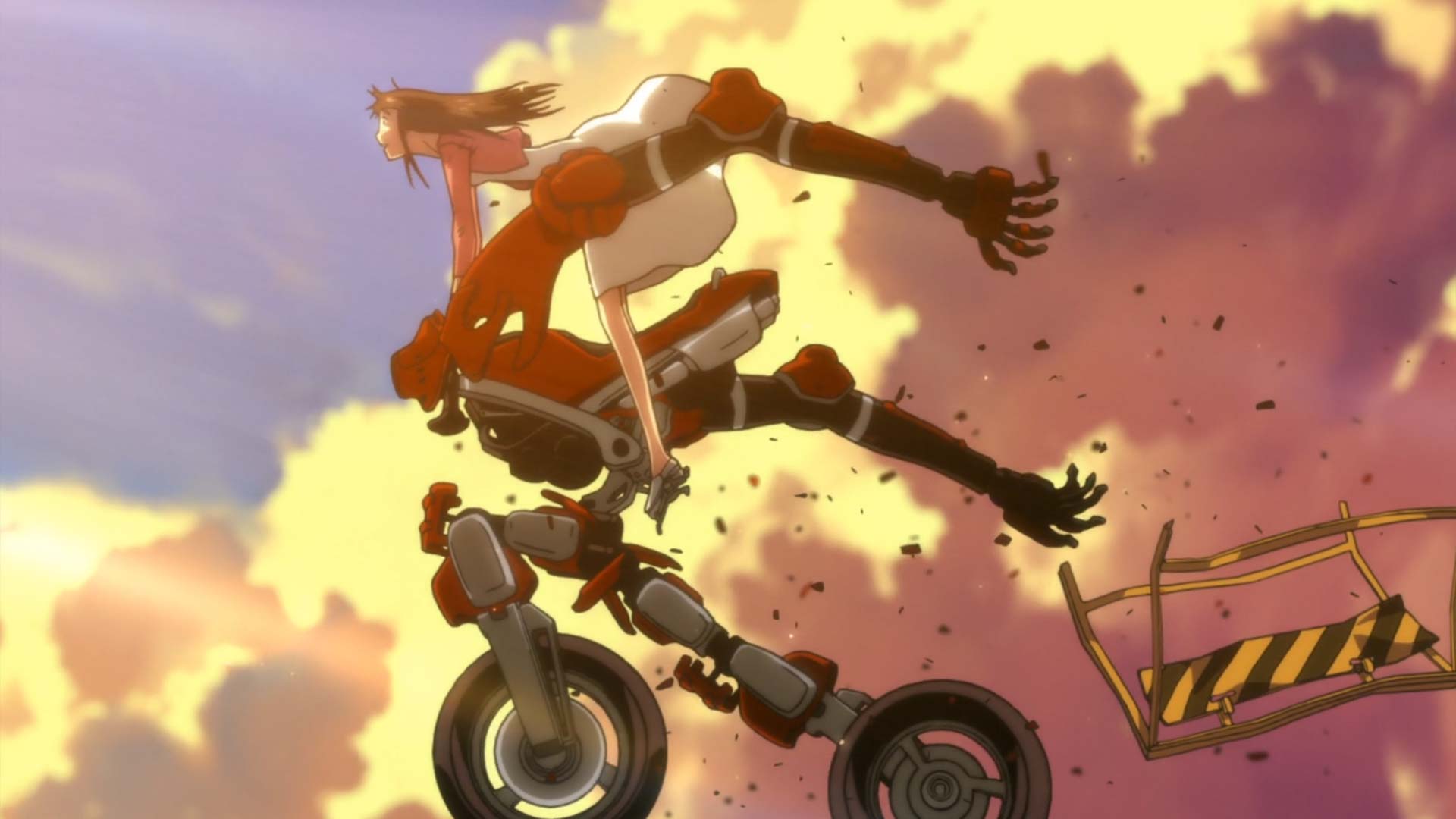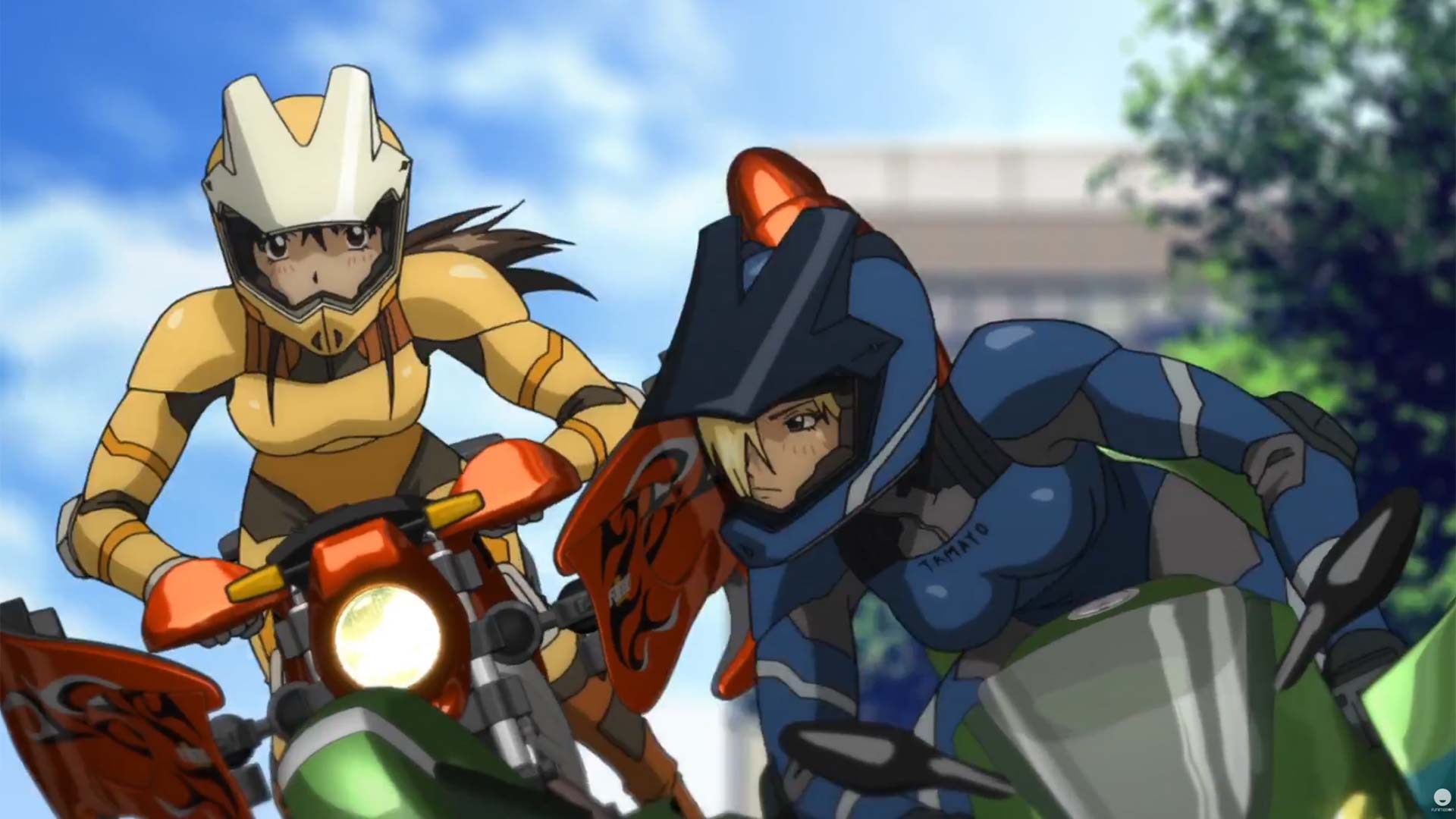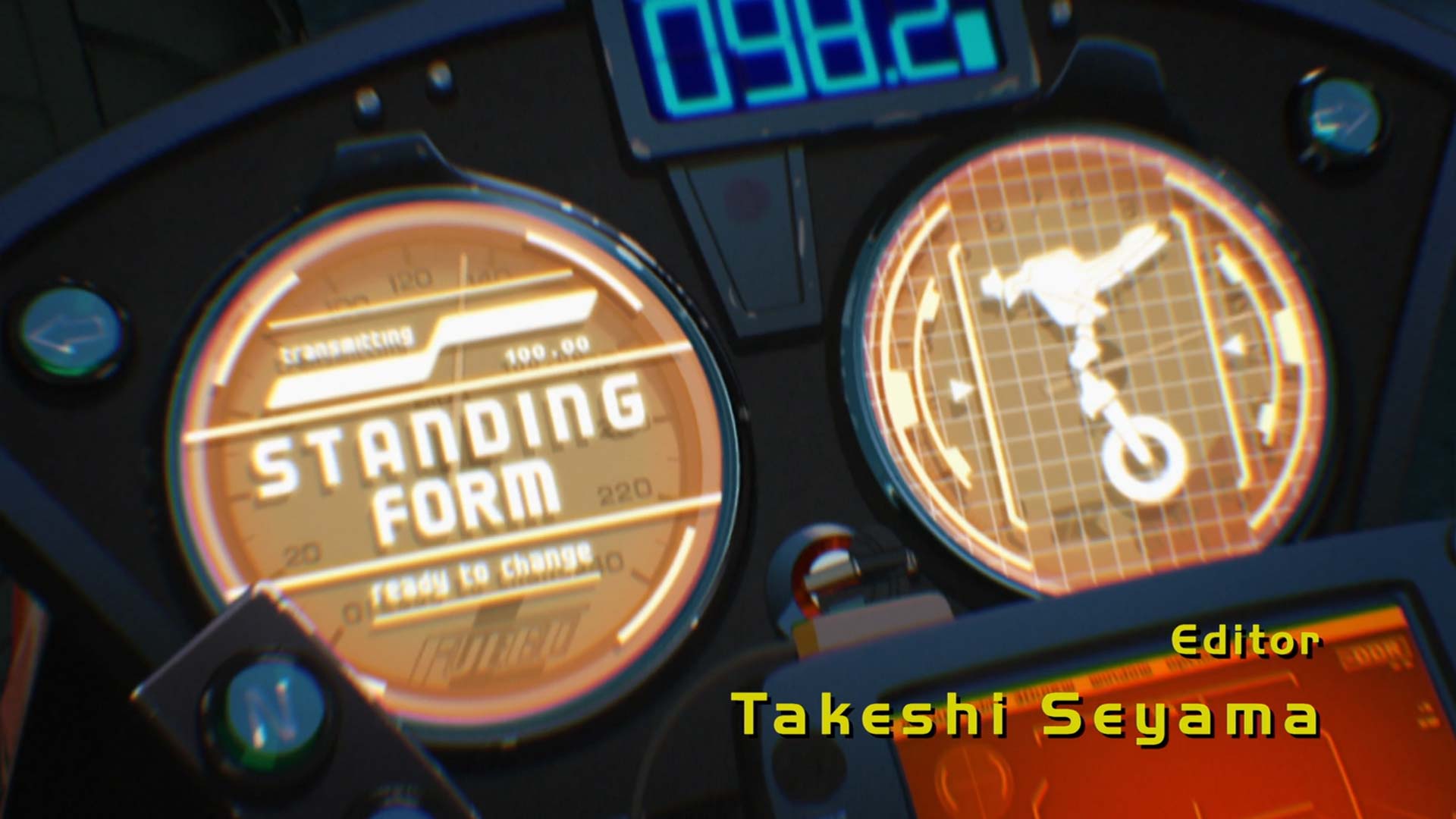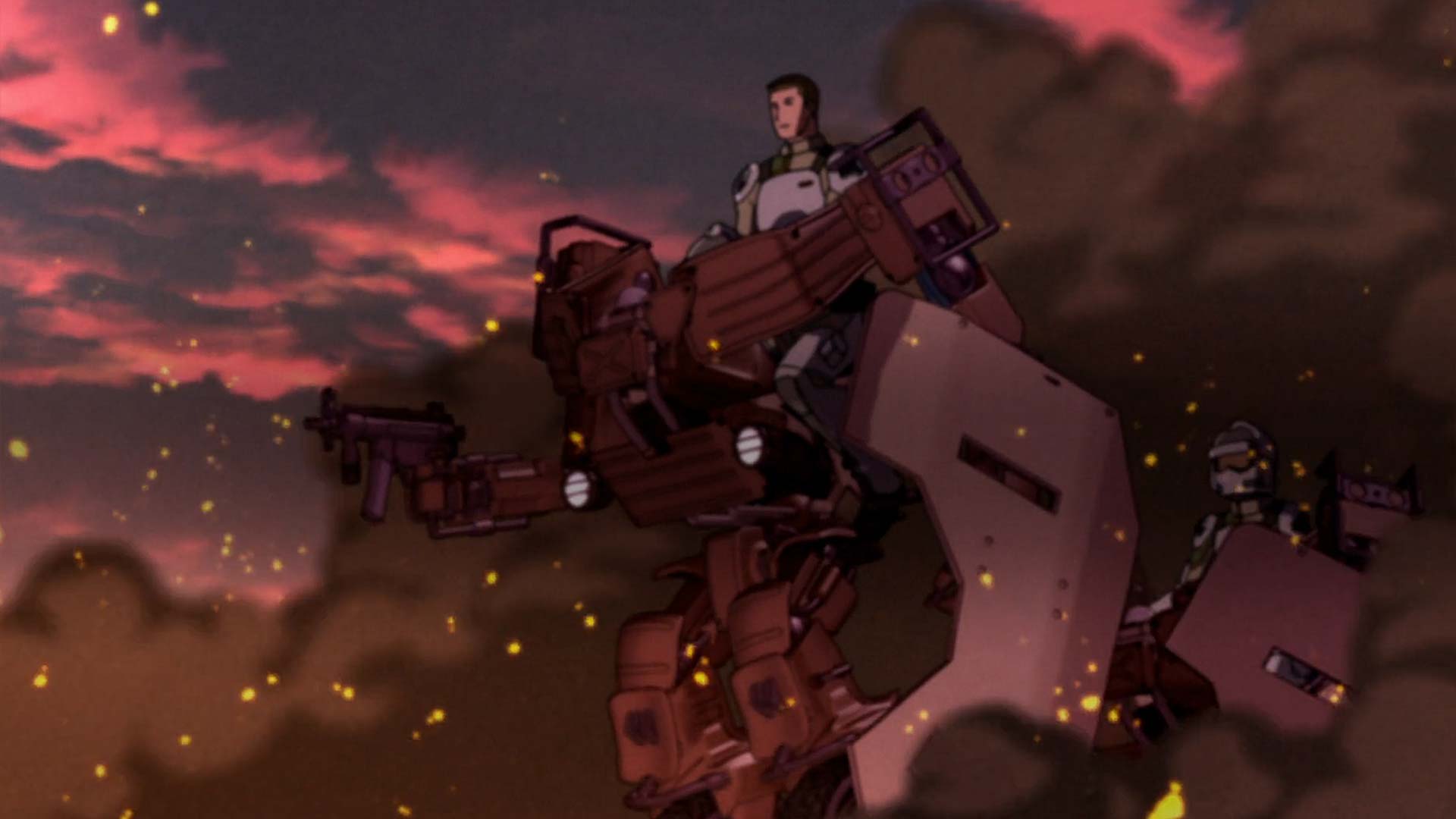
RideBack Anime Review - Dancing to Moto-Mecha Victory
RideBack is a mecha Japanese manga written and illustrated by Tetsuro Kasahara which takes the world of motorcycle riding to a new "transformative" direction. Animated by Madhouse in 2009 and set in 2025, a young dancer finds redepmtion in her RideBack "Fuego" while a corrupt organization called the GGP has taken over the world.
A prodigal ballet dancer, Rin Ogata, had to give up her dreams of pursuing professional ballet. Years later, she develops a natural attraction and intrigue towards transforming motorcycle like vehicles called “RideBacks”. She finds that her natural balance and finesse conditioned through ballet makes her a natural on the RideBacks. However, her exceptional mastery of the RideBack’s gets her and her new friends in some trouble with the government.
• Motorcycles in Anime
Motorcycles have long since been established as more than just a vehicular counterpart. The use of motorcycles in anime would not just become a form of aesthetic character accessory, but in RideBack it becomes symbolic of Japan’s post-war youth, freedom and personal evolution. This would also become an iconic image of motorbike riders that continues to influence a global anime audience. The well known anime "Akira" featured Kaneda's iconinc red bike and the more recent anime titled "Super Cub" with many others attest to this.

In 1950s Japan, as people dealt with the war's losses, a number of gangs formed. The Bososzoku, or "reckless gangs," a juvenile group that rose to prominence in the 1970s and peaked in the 1980s, would have long-term consequences for the country's attitude towards motorcycles and biking culture. They had a direct impact on motorcycle culture and influenced the creators of some of our favorite anime films and series.
War broke down Japanese society's strict uniformity, allowing for the emergence of new subcultures and blossoming manifestations of individualism. The immortalization of these intriguing lives in some of our favorite bike-mecha animes allowed for the significant and long-lasting influence that these subcultures had on a worldwide scale.

• RideBack Anime Plot
Set in a Neo Tokyo with infinitely towering skyscrapers over miniature highways, the streets are littered with thugs and police sirens wailing relentlessly for what seems like endless cycles of corruption and crime. RideBack excels at being an exciting ride (no pun intended) for a short 12-episode anime which delves deep into more obscure themes such as political drama, power dynamics and police corruption.
Although initially feeling like a simple slice-of life mecha genre anime littered with excessive introduction exposition and crammed with symbolism, the quality of the animation and CG is amazing. Each action scene regarding the RideBack’s were fluid and natural, almost to the point of realism. The alternate timeline in the future was believable by creating a breathing, living atmosphere in post-modern Tokyo.

Furthermore, the characters, given the short time constraint of the show to cover such a diverse range of themes and topics, were given surprisingly good development for the audience to actually care about. We get to see the BMA’s ambiguous desires and motivations that were slowly uncovered and Rin’s (the main cheracter) newfound passion and exhilaration she finds in RideBacks which brings a new purpose to her life.
Unfortunately, many supporting characters were often times treated one-dimensionally and weren’t explored as deeply as main characters, but this is not uncommon in a short series. Often times they help create plot scenarios, such as the RideBack club members simply seen as just “club member’s”.
• (Wo)Man + Machine = Freedom + Responsibility
Freedom is a label often associated with riding. Bikers are always known as adventurers and thrill seekers puzzled by the web of a “normal” life. Referencing from all the way back to the godfather of motorbike animes, Akira, at the core of the anime, Tetsuo’s transformation is a respectable one. From a weak, reserved strained self to one who can confidently master the motorcycle. Overcoming his fears and expectations and gains a newfound sense of freedom and confidence waving their nationalistic banners such as the Imperial Rising Sun.
RideBack also tackles the theme of freedom within the series. Rin herself also comes to terms with her own personal struggles, questioning all the things she does and her life change on stage mistake. "Why is it when I ride the bike, does my heart pound so much? This exhilaration, this elation." These are just some of the questions Rin asks within the show and her personal growth has been in general a delight to see.

The use of RideBacks is also portrayed to be more than just a form of transport, but an extension of the rider’s body. These are seen in many of the techno, classical heart-thumping action pieces throughout the show. Where Rin puts her ballet expertise to use by almost elegantly mastering the bike in mid-air. Juxtaposing the elegance and grandeur of soft ballet to the hardy nature of bike riding. Depicting the use of motorbiking to be an extension of one’s body language and posture really transcends its symbolism compared to the average mecha-bike anime.
The sense of corruption depicted within the show, on the other hand, is far from stereotypical, highlighting the issues with a RideBack mounted police force that is more concerned with closing cases or throwing someone under the bus in order to get the results they want or need. RideBack goes above and beyond to make things uncomfortable by gradually transforming our cast's hometown into a police state, with citizens' rights to privacy and freedom being increasingly infringed upon. Benjamin Franklin's remark "those who are willing to sacrifice freedom for safety deserve neither" is told fairly clearly in this episode. Its message is political and made clearly apparent.

I also have to give the show credit for not automatically labelling the rebel forces the "good guys." While Kiefer, the rebel commander slash head terrorist, may have a solid cause to dislike Romanoff, his methods leave something to be desired. He's unconcerned about injuring innocent people in his war, and he'll gladly use Rin — or anyone else — to achieve his objectives. It's unclear whether his terrorist actions result in the deaths of civilians or if this is just GGP propaganda to hide their own faults or wrongdoings. With so many shades of grey to choose from, morality and principle is all over the place.
• Conclusion
RideBack is a captivating and fun adventure. Initially leading you to expect something entertaining, a simple run-of-the mill slice of life mecha anime but slowly unveils its darker, thought-provoking but action packed themes. It’s only when Rin joins the RideBack club does the show gradually take on a more cynical approach as the mecha bikes open up a whole new world of persepctive for the characters. Exploring political corruption and international affairs come to the forefront. Such as how a terrorist group gains legitimacy demonstrating the old-world order's inability to use its outdated combat technologies.

It's here that the show's strengths shine through, most notably in the writing. Its story of totalitarianism versus terrorism will almost certainly always be relevant. Folks who have genuine grievances against government administrations are labelled terrorists in order to be conveniently erased. At the same time, in other regions of the world, prior totalitarian regimes have been deposed by public revolt and relatively peaceful ways, all of which makes RideBack all the more intriguing and compelling to watch as a social political commentary.
The only flaw I can find within the show is its shaky plot. The viewer may not understand fully what happens within the show. Who is this mysterious lady who seems to be all-knowing and have all the answers? Why does the BMA head leader want vengeance so badly? How did he get played over and why? Although none of these points would take away from the amazing experience of RideBack, it would’ve been better if the series adopted a longer episode list to expand on such complex ideas and themes and answered just some of our burning questions.
Ultimately, if you are an avid motorcycle and anime fanatic, unafraid to delve deep into politics and world corruption in search of a thought-provoking and original mecha series, the RideBack anime is one you'll not want to miss!
Have you watched RideBack and have some thoughts about it? Got a favorite motorcycle anime we may have missed? Let us know in the comments below!
• Where to Watch RideBack Anime:

• RideBack Anime Episode List
- The Crimson Iron Horse - Rin hops on a rideback, loses control, and ends up jumping off a ledge with the rideback.
- Spread Legs Form - Rin agrees to race Tamayo, the club leader and national RideBack champion. She impresses Tamayo who decides to train her as a RideBack driver.
- And Then the Flag Swings - Rin and Tamayo enter the All-Japan championship race. Rin has some trouble with her RideBack: Balon. She eventually makes a comeback from last place to fourth but is force to retire on the last lap. Tamayo wins the race.
- Shoko, In the Nick of Time - Shouko goes shopping. There is a terrorist attack at the new GGP commander's inauguration ceremony and Shouko is taken hostage. Rin goes to Shouko's rescue on Fuego, evading both the terrorists and the army. She is eventually cornered by the army but saved by a mysterious man on a RideBack.
- Mystery Rideback Girl - Shouko doesn't come to the club, but then a journalist arrives to investigate Tamayo. Okakura go dismantle Fuego, Rin's little brother Kenji is dragged into a shady plan, the GGP wants to force the deployment of the White Ridebacks and knows Rin is Rideback Shoujo.
- Ride Lightning - Biker gang incident set up by the GGP to test in real conditions the not yet approved White Ridebacks. The incident involves Kenji: by chance Rin and the journalist are near-by: she takes pictures while Rin tries to save her brother's life.
- Crime and Punishment - Kenji and Rin are in jail: he admitted to crimes he didn't commit to protect Rin. While being transferred to a GGP facility, Rin gets kidnapped by the BMA. Okakura goes to meet the BMA leader Kiefer. He's being followed by the GGP.
- Chosen - The journalist investigates the legendary Arizona Battle. Kiefer and Rin have a long talk about life and riding. Finally the GGP starts the assault on the BMA's location, but the terrorists have already laid traps. Okakura escapes with Rin. After neutralising the attackers, Kiefer threatens to kill Romanov on the radio.
- In the Garden of Sun - GGP declares an emergency state causing resistance from civilians. Okakura brings Rin to the Takaoka's house and asks Tamayo to take care of her. He then goes to find Kiefer. The journalist goes to Arizona to investigate former comrades of Romanov. Tamayo calls her dad. Romanov unloads a new rideback weapon
- Master of the War - Rin and Tamayo flee the Takaoka house using her father's influence. Kiefer and Okakura plans an assault on GGP. The treacherous second in command of Romanov wants to make a deal with Takaoka Ryuunosuke. Tamayo's father is arrested. Tamayo and Rin head toward the city while an anti-GGP protest begins. While on the train, they see Suzuri who is mistaken for the mysterious female Rideback and is pursued by the GGP white rides. Suzuri is killed as she attempts to escape. A devastated Rin claims that both her and Okakura's obsession with Ridebacks killed Suzuri.
- Sometimes it's Cloudy after the Rain - Rin reflects on her past. Rin refuses Kiefer's assault on GGP. Shoko attempts to buy flowers for Suzuri, but all the stores are closed. As BMA beings their attack, Rin and Tamayo prepare to escape with a helicopter, Rin has a flashback and decides that she can't leave. The BMA base is overrun by new autonomous Rideback models Grimoire, but Rin and Tamayo manage to escape on their Ridebacks.
- To the Lighted Stage - Tamayo's fuel tank is dry. Rin baits the Rideback units to chase her. The BMA and the GGP engage in combat. In the midst of the firefight, GGP is ordered to stand down. Kiefer and Romanof have a face off, however, Romanof is shot by Misawo. Meanwhile, Rin leads the Ridebacks to the location where Suzuri died and fights them. She "dances"/rides with Feugo, and it's beautiful. The news cameras are rolling catching every jump and everyone can see her, from her best friend to her little brother in jail. As Rin finishes, snowflakes to fall. Soon after, the GGP steps down from total government control and Tomayo's father is put in charge. A new school year has begun, the Rideback club is up and running again. The final scene is similar to the beginning, with cherry blossoms falling. Rin ends the episode by saying, "I'm back."




Comments powered by CComment